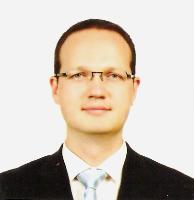
Maxim Mamin
Korea and the European Union should pursue integrated standards and regulations on medical equipment to maximize the benefits of a free trade agreement between the two regions, a senior European industry official said.
The latest pact became effective on July 1, and eliminates tariffs on medical devices from the EU over seven years. But concerns remain among European manufacturers that extra tests and requirements imposed by the Korean government on their already certified products could delay introduction here and dampen sales, said Maxim Mamin, chairman of the healthcare-medical devices committee for the European Union Chamber of Commerce in Korea.
“Korea doesn’t accept all the test results provided by European companies, which is their major concern,” Mamin told The Korea Herald on the sidelines of the chamber’s press conference in Seoul on June 24. “In most cases, European companies have to do additional tests. In the EU area, it’s enough to certify products under one electrical standard while other licenses are automatically adopted.”
Manufacturers of medical devices in the 27-nation bloc have high hopes about the pact, he said, as it would help solidify their footing in the Korean market.
However, given costs and time entailed in the supplementary process, such disparities between the two partners could undermine the benefits of the FTA ― market gains for the exporters and lower prices for consumers, Mamin added.
“A major impact on patients and customers is that companies may not introduce the newest products to Korea,” Mamin said, adding that they may see the stakes are too high to offset their investments.
Korea is the fourth-largest medical device market in Asia and the 13th largest worldwide. The market has expanded at double-digit rates since 2005, reaching nearly 3 billion euros ($4.35 billion) last year, according to the EUCCK.
Imported products account for about 66 percent of the Korean medical equipment market, around 31 percent of which from the EU. German suppliers amount to 13 percent of the total, followed by Ireland, Switzerland, the U.K. and France.
By product, diagnostic imaging equipment claims the largest stake with 32 percent, followed by consumables, orthopedic and implantable tools, and dental products with 15 percent, 12 percent and 7 percent, respectively.
The EUCCK has also urged the Korean government to clear up non-tariff barriers and modify regulations to align them with international standards.
In its report on access barriers to the Korean market, the organization stated the country’s current pricing and reimbursement policies are “far from transparent.”
“The National Federation of Medical Insurance does not publish data regarding product classifications or eligibility, nor does it provide published guidance regarding the reimbursement process,” it said in the paper.
To make best use of the trade deal, Mamin stressed the need for more transparency and simplification of regulations in both sides.
A working group between EU delegates and Korean authorities will be formed to address such issues.
“Our goal is basically to simplify the regulatory areas in Korea as well as the EU to have the same business practices, as the purpose of the FTA is to make business easier for Korean and EU companies,” Mamin added.
By Shin Hyon-hee (heeshin@heraldcorp.com)




![[From the Scene] Monks, Buddhists hail return of remains of Buddhas](http://res.heraldm.com/phpwas/restmb_idxmake.php?idx=645&simg=/content/image/2024/04/19/20240419050617_0.jpg&u=20240419175937)

